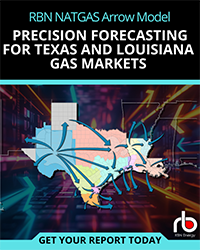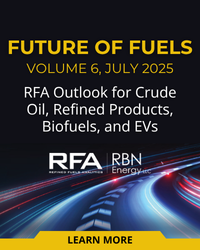Crude oil and natural gas production growth stalled in 2015 and has declined this year in some of the big shale basins. But we may be seeing a turnaround. The latest EIA Drilling Productivity Report, released on December 12, 2016, included upward revisions to its recent shale production estimates and also projects an increase in its one-month outlook for the first time in 21 months (since its March 2015 report). Today we break down the latest DPR data.
Since its inception in late 2013 (we first introduced it to the RBN blogosphere in Higher and Higher), the DPR has become an industry bellwether for production trends. The report provides a leading indication of expected crude and natural gas production from seven leading shale basins across the U.S. To do that, EIA takes its historical monthly production estimates (which are lagged by two months), well production data from individual states as well as rig counts and other data sources and estimates historical and recent rig productivity. It then comes up with implied oil and gas production volumes for each month going forward, including the two previous months where EIA data is not yet available, as well as the current month and one forward month. It does this for the seven major U.S. shale plays: Bakken, Eagle Ford, Haynesville, Marcellus, Niobrara, Permian and Utica. We provided a detailed explanation of the DPR’s model inputs, methodology, assumptions and risks in our blog series “Every Rig You Take.” But in short, the aim of the report is to estimate the net impact of natural declines from existing wells (older than 30 days), productivity changes and new drilling on production volumes on a monthly basis. The bottom line is if improving rig productivity is more than offsetting natural declines or slower drilling activity, then production is expected to increase. If the decline in volume from existing wells is the larger of the two, then DPR shows a decline in production. As another month of actual production volumes and other inputs become available, the DPR revises its historical and forward estimates in the next release.
The latest DPR not only shows upward revisions in recent production estimates (for both oil and gas) but also indicates a potential turning point in production trends––for the first time since the March 2015 report, the DPR is projecting a net increase in production in January. That is not to say we have not seen actual month-on-month increases in the last 21 months—we have. In many months, as more data became available and is applied retroactively, the DPR’s projected declines have turned into actual increases. However, the March 2015 report was the last time the DPR’s analysis of drilling activity and rig productivity indicated that production would increase. So let’s take a closer look at the data, starting with what’s changed in DPR’s latest oil and gas estimates. Figure 1 compares the actual and implied estimates for total shale oil (left graph) and shale gas production (right graph) from the latest (December 2016) report and the previous (November 2016) report. The solid lines in the graphs are considered more or less actuals (likely to see lesser revisions), while the dashed continuation lines are implied estimates based on the model inputs described above.
Join Backstage Pass to Read Full Article







